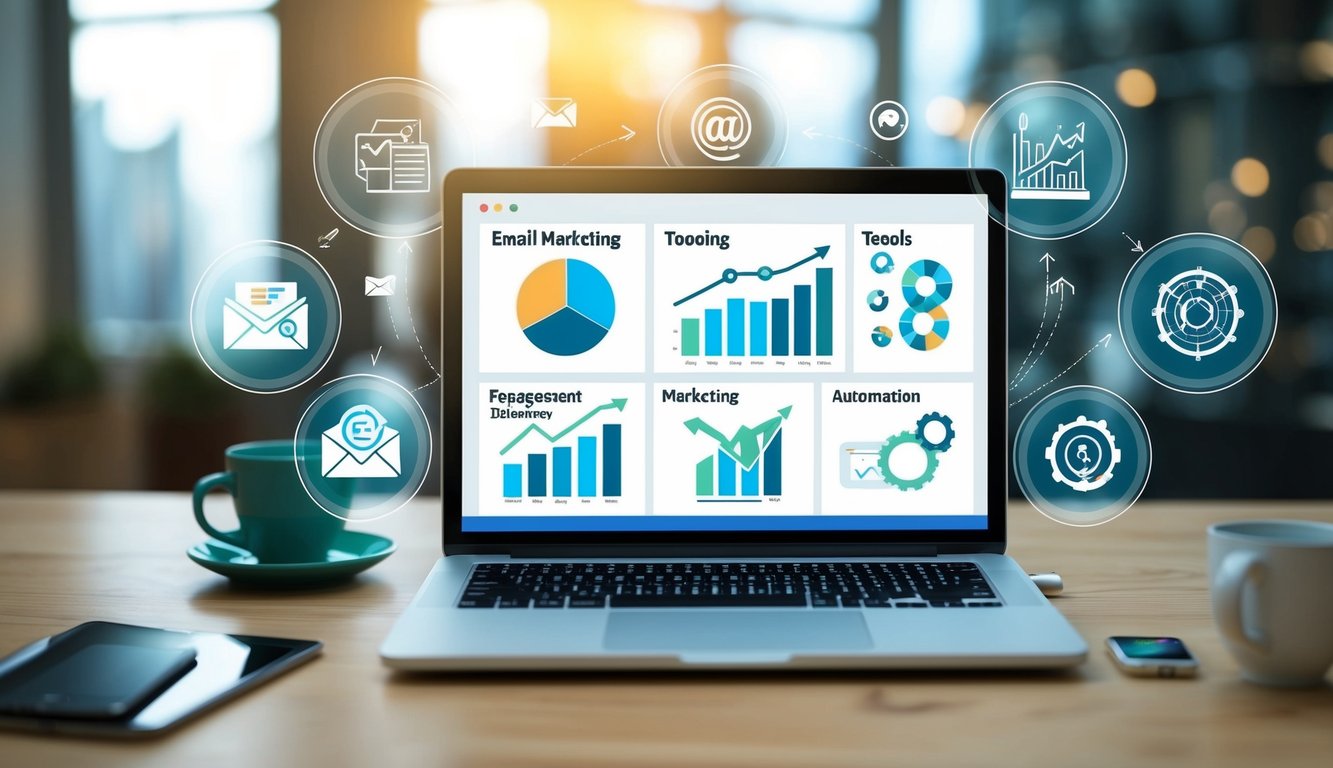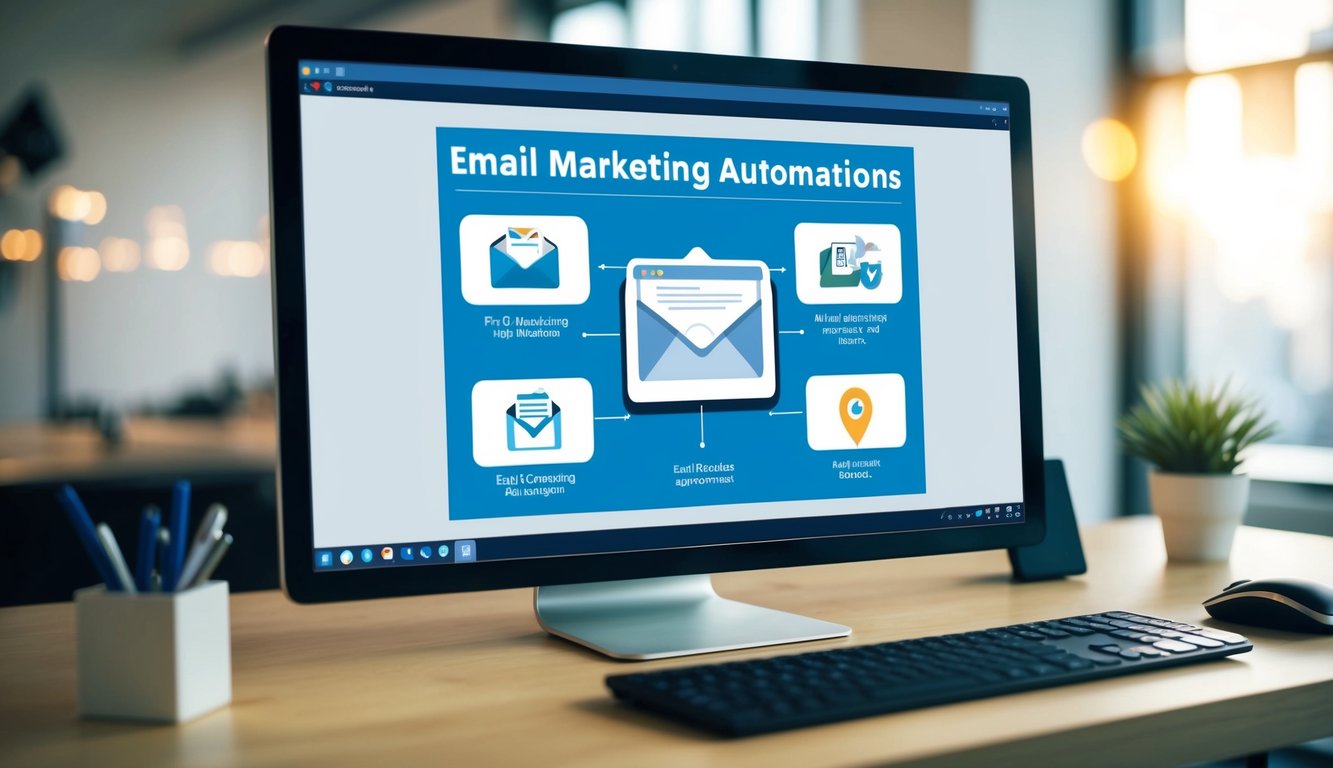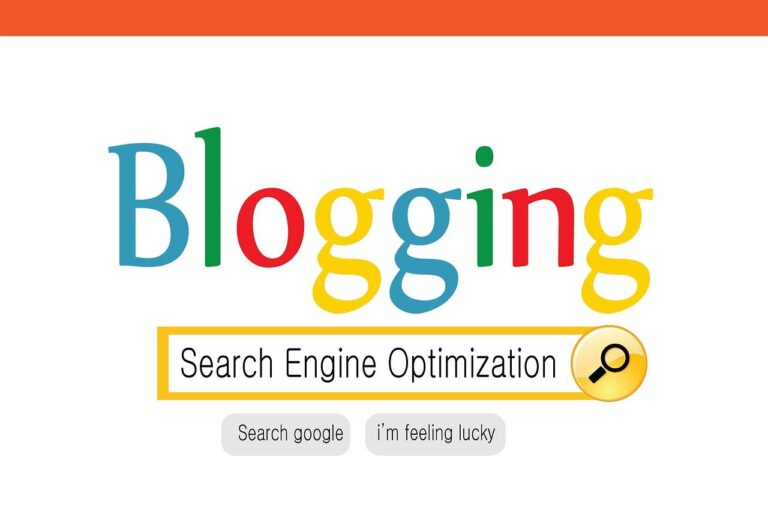Email marketing automation has become essential for businesses looking to streamline their communication and boost engagement. By leveraging the right tools and techniques, you can significantly enhance your marketing efforts while saving time and resources.
Email automation tools can improve efficiency and create a more successful marketing experience.

Implementing effective automation strategies allows you to deliver personalized content to your audience at the right time. From welcome series to re-engagement campaigns, automation enables you to nurture leads and maintain customer relationships effortlessly.
With the array of email marketing automation tools available, you can find solutions that cater to businesses of all sizes and needs.
Key Takeaways
- Email automation enhances marketing efficiency and personalization
- Choosing the right tools is crucial for successful implementation
- Automated workflows can significantly improve customer engagement and conversions
The Benefits of Email Marketing Automation
Email marketing automation offers numerous advantages that can significantly enhance your marketing efforts. By leveraging automated tools and techniques, you can streamline your processes, engage clients more effectively, nurture leads, and optimize your budget.
Time-Saving Advantages
Email automation saves you valuable time by handling repetitive tasks. You can set up automated workflows that trigger emails based on specific actions or schedules. This eliminates the need for manual sending, freeing up your time for strategic planning and analysis.
Automated systems can manage list segmentation, ensuring your messages reach the right audience without manual sorting. You can also create templates for common email types, reducing the time spent on crafting individual messages.
By automating follow-ups, you maintain consistent communication without constant manual effort. This ensures no leads fall through the cracks and keeps your brand top-of-mind.
Improved Client Engagement
Automation allows for highly personalized communication. You can tailor content based on subscriber data, behaviors, and preferences, making your emails more relevant and engaging.
Targeted email campaigns deploy instantly, speaking directly to your audience’s needs and wants. This personalized approach can significantly boost open rates and click-through rates.
Automated systems can also trigger emails based on specific actions, such as abandoned carts or website visits. This timely, relevant communication can re-engage potential customers and drive conversions.
You can easily A/B test different email elements to optimize your campaigns, continually improving engagement over time.
Enhanced Lead Nurturing
Automation excels at guiding leads through your sales funnel. You can create sophisticated nurture campaigns that deliver the right content at the right time, based on a lead’s behavior and stage in the buyer’s journey.
Automated drip campaigns can educate prospects about your products or services, building trust and establishing your expertise. This consistent, valuable communication keeps leads engaged until they’re ready to make a purchase.
Personalized email workflows can adapt to each lead’s interests and actions, providing a tailored experience that moves them closer to conversion. You can automatically score leads based on their interactions, helping your sales team prioritize their efforts.
Cost Efficiency
Email automation offers significant cost savings compared to manual processes. By reducing the time and labor required for email marketing, you can allocate resources more efficiently.
Automated campaigns can run 24/7, maximizing your reach and engagement without incurring additional costs. This scalability allows you to grow your email marketing efforts without a proportional increase in expenses.
You can achieve higher ROI through improved targeting and personalization. By sending more relevant messages, you’re likely to see increased conversion rates and customer lifetime value.
Automation tools often provide detailed analytics, allowing you to measure and optimize your campaigns continually. This data-driven approach ensures you’re investing in the most effective strategies.
Key Tools For Email Marketing Automation
Email marketing automation tools streamline your campaigns, boost efficiency, and drive better results. They offer features to optimize your efforts and integrate seamlessly with other platforms.
Overview Of Popular Software
Mailchimp stands out as a versatile option for businesses of all sizes. It provides user-friendly templates and robust automation features.
Constant Contact excels in deliverability rates and offers excellent customer support. Its intuitive interface makes it ideal for beginners.
ActiveCampaign combines email marketing with CRM functionality, allowing for highly personalized campaigns based on customer behavior.
Drip specializes in e-commerce email marketing, offering advanced segmentation and personalization options tailored to online retailers.
Features To Look For
Mobile optimization is crucial, as an increasing number of users open emails on mobile devices. Ensure your chosen tool creates responsive designs.
Segmentation capabilities allow you to target specific audience groups with tailored content, improving engagement rates.
A/B testing functionality helps you optimize subject lines, content, and send times for better performance.
Automated workflows enable you to set up triggered emails based on subscriber actions or specific time intervals.
Analytics and reporting features provide insights into campaign performance, helping you refine your strategies over time.
Integration With Other Platforms
CRM integration allows you to sync customer data, enabling more personalized and targeted email campaigns.
E-commerce platform connections help you automate abandoned cart emails and product recommendations based on purchase history.
Social media integrations facilitate cross-channel marketing efforts, expanding your reach and engagement opportunities.
Website and landing page builders integration streamlines lead capture and nurturing processes.
API access enables custom integrations with your existing tech stack, enhancing overall marketing automation capabilities.
Practical Techniques For Effective Automation
Email automation can significantly boost your marketing efforts when implemented strategically. The following techniques will help you maximize efficiency and engagement in your campaigns.
Segmenting Your Audience
Divide your email list into distinct groups based on shared characteristics. Use demographic data, purchase history, or engagement levels to create targeted segments. This allows you to tailor your messages for maximum relevance.
Create buyer personas to represent different segments of your audience. Use these personas to guide your content creation and campaign strategies.
Implement dynamic segmentation that automatically updates based on subscriber behavior. This ensures your segments remain current and accurate.
Consider using lead scoring to prioritize high-value prospects. Assign points based on actions like website visits, email opens, and purchases. Use these scores to determine which segments receive specific content or offers.
Personalizing Email Content
Go beyond using the subscriber’s name. Incorporate data like past purchases, browsing history, or location to create truly personalized experiences.
Use dynamic content blocks that change based on subscriber attributes. This allows you to send a single email with variations tailored to different segments.
Implement personalized product recommendations based on individual purchase history or browsing behavior. This can significantly increase click-through rates and conversions.
Test different personalization strategies to find what resonates best with your audience. Use A/B testing to compare personalized vs. non-personalized content and refine your approach.
Scheduling And Timing
Analyze your audience’s engagement patterns to determine optimal send times. Consider factors like time zones, work schedules, and device usage habits.
Implement send-time optimization algorithms that automatically deliver emails when each individual subscriber is most likely to engage.
Use drip campaigns to nurture leads over time. Set up a series of emails that are triggered based on specific actions or time intervals.
Create automated reminders for abandoned carts or incomplete purchases. Time these messages strategically to encourage conversions without being intrusive.
Utilizing Autoresponders
Set up welcome series emails for new subscribers. Include important information about your brand, products, or services to engage them from the start.
Create birthday or anniversary emails to celebrate milestones with your subscribers. These personal touches can boost brand loyalty and engagement.
Implement transactional autoresponders for order confirmations, shipping updates, and feedback requests. These timely, relevant messages enhance the customer experience.
Use autoresponders to re-engage inactive subscribers. Set up a series of emails designed to win back their attention and encourage interaction with your brand.
Streamlining Communication With Clients

Email automation simplifies client communication, saving time and enhancing engagement. Personalized messages at key touchpoints nurture relationships and drive conversions without constant manual effort.
Automated Welcome Series
Email automation tools enable you to create impactful welcome sequences for new subscribers or customers. Set up a series of 3-5 emails introducing your brand, products, and value proposition.
Customize content based on signup source or initial interactions. Include a mix of educational material, special offers, and calls-to-action.
Track open rates and click-throughs to refine your messaging. A/B test subject lines and send times to optimize performance.
Follow-Up Emails And Reminders
Automate follow-ups after purchases, consultations, or other key events. Send order confirmations, shipping updates, and satisfaction surveys without manual intervention.
Set up reminder emails for upcoming appointments or expiring offers. Personalize content with the client’s name, past purchases, or account details.
Use triggers based on user behavior to send relevant product recommendations or usage tips. This keeps your brand top-of-mind and encourages repeat business.
Re-Engagement Campaigns
Identify inactive subscribers or customers using email marketing automation. Create targeted campaigns to win them back.
Start with a friendly check-in, acknowledging their absence. Offer exclusive discounts or content to spark interest.
If initial attempts fail, send a final “We miss you” message with a strong incentive to re-engage. Include an easy unsubscribe option for those who prefer to opt-out.
Monitor campaign results and adjust your strategy based on what resonates with your audience. Re-engagement efforts can revive dormant relationships and boost overall list health.
Boosting Client Engagement

Email automation offers powerful tools to increase client engagement and drive meaningful interactions. By personalizing content and optimizing delivery, you can create more impactful email campaigns that resonate with your audience.
Interactive Email Content
Interactive elements in emails can significantly boost engagement rates. You can incorporate features like polls, quizzes, or clickable image carousels to make your emails more engaging and memorable.
Email marketing automation allows you to easily implement these interactive elements at scale. Consider using buttons that change color when hovered over or embedded videos that play directly in the email.
Another effective tactic is to include countdown timers for limited-time offers. This creates a sense of urgency and encourages immediate action from your recipients.
A/B Testing For Optimization
A/B testing is crucial for refining your email marketing strategy. You can test various elements such as subject lines, email copy, images, and call-to-action buttons to determine what resonates best with your audience.
Start by creating two versions of an email, changing only one element at a time. Send these variants to a small portion of your list and analyze which performs better.
Automated email workflows can help you conduct A/B tests systematically. Use the results to inform future campaigns and continuously improve your email performance.
Tracking And Analyzing Performance
To truly boost client engagement, you need to understand how your emails are performing.
Utilize email automation tools to track key metrics such as open rates, click-through rates, and conversion rates.
Set up automated reports to monitor these metrics regularly. Pay attention to trends over time and identify which types of content or subject lines generate the most engagement.
Use this data to segment your audience based on their behavior and preferences. This allows you to tailor future campaigns more effectively, ensuring that each subscriber receives content that’s most relevant to them.

Conclusion
Email marketing automation offers powerful benefits for businesses of all sizes. By implementing the right tools and strategies, you can significantly boost your marketing efficiency and effectiveness.
Personalization is key to successful automated email campaigns. Tailor your messages to each recipient’s preferences and behaviors for maximum impact.
Timing plays a crucial role in email automation. Set up triggered emails based on specific customer actions or milestones to deliver timely, relevant content.
Regular testing and optimization are essential. Analyze your campaign performance and make data-driven adjustments to continuously improve your results.
Choose an email automation tool that fits your specific needs and budget. Popular options like Mailchimp offer user-friendly interfaces and comprehensive features for businesses at various stages of growth.
Stay up-to-date with emerging trends in email marketing automation. Embracing new technologies and techniques will help you stay ahead of the competition and maximize your marketing ROI.
By leveraging automation, you can create more meaningful interactions with your audience while saving time and resources. Start implementing these strategies today to transform your email marketing efforts and drive better business outcomes.
Frequently Asked Questions

Email marketing automation streamlines campaigns and enhances personalization. Effective strategies leverage AI, follow best practices, and utilize suitable tools to maximize efficiency and results.
What are the essential components of an effective email marketing automation strategy?
An effective email marketing automation strategy requires segmentation, personalization, and trigger-based workflows.
Segmentation allows targeting specific audience groups, ensuring relevant content delivery. Personalization tailors messages to individual preferences and behaviors. Trigger-based workflows automate emails based on subscriber actions, nurturing leads and driving conversions.
How can AI technology enhance the personalization of automated email campaigns?
AI technology significantly boosts personalization in automated email campaigns.
It analyzes subscriber data to predict preferences and behaviors, enabling highly targeted content recommendations. AI-powered tools can optimize send times, subject lines, and email content for maximum engagement. This level of personalization improves open rates, click-through rates, and overall campaign performance.
What are the key benefits of implementing email automation for businesses?
Email automation offers numerous benefits for businesses.
It improves efficiency by reducing manual tasks and ensuring timely communication with subscribers. Automated campaigns also enhance personalization, leading to improved engagement and higher conversion rates. They also provide consistent messaging and help nurture leads throughout the customer journey.
How can businesses choose suitable email automation tools for their marketing needs?
To choose suitable email automation tools, assess your business size, budget, and specific requirements.
Consider factors like ease of use, integration capabilities, and scalability. Popular tools like Mailchimp offer user-friendly interfaces and cater to businesses of all sizes. Evaluate features such as segmentation options, A/B testing, and reporting capabilities to find the best fit.
What best practices should be followed to ensure the success of automated email marketing campaigns?
Successful automated email campaigns require regular list maintenance and segmentation updates.
Focus on creating valuable, relevant content for each subscriber segment. Implement A/B testing to optimize subject lines, content, and send times. Monitor key metrics like open rates and click-through rates to continuously improve campaign performance.
What free email automation tools are available for small businesses just starting with email marketing?
Several free email automation tools cater to small businesses new to email marketing. Mailchimp offers a free plan with basic automation features for up to 2,000 subscribers. SendinBlue and MailerLite also provide free plans with limited automation capabilities. These tools allow you to explore email automation without a significant financial investment.






